1. Launch Program
1.1. Communicate
1.1.1. Staff
1.1.2. Families
1.1.3. Corporation
1.2. Introduce Module to Day Programs
1.2.1. Take through
1.2.2. Role expectations
1.2.2.1. Participants of pilot
1.2.2.2. Do have to solve every problem
1.2.3. IPC Teamwork
1.2.4. Evaluation
1.2.4.1. pre, during and post
1.3. Resources
1.3.1. 1 FTE
1.3.2. Budget
2. Create Tactical Group
2.1. Start Steering Committee
2.1.1. Rita, Alec, Faith M, Jordanne, Melissa, IT, Education, OE, Clinical Reps, Prof Practice, Dr's, Social Workers,
2.1.2. Oversee implementation
2.1.2.1. Evaluation
2.1.3. Where does Possibilities go on Care Plan
2.1.4. Need a champion for each pathway
2.2. Select Clients
2.2.1. How many, 25?
2.2.1.1. Existing clients
2.2.1.1.1. Mountainview
2.2.1.1.2. Freeman
2.2.2. Method for choosing
2.2.2.1. Family Involvement
2.2.3. Consent
3. Introduction to the Principles
3.1. Training
3.2. Assessments
3.2.1. Types
3.2.1.1. Self
3.2.1.2. Team
3.2.1.3. Organization
3.2.2. Baycrest Ethical Framework
3.3. Buy In
3.3.1. Staff
3.3.2. Leaders
3.4. Evaluation
3.5. Communicate to families
3.6. Team developing- Faith, Jordanne, Diana, Angie, Rosanne,
4. Commitment # 1 Autonomy (Customer Service)
4.1. Complete tools
4.1.1. How I Want to Live
4.1.1.1. Build it
4.1.1.2. Pilot
4.1.1.3. Train staff in how to use it
4.1.1.4. Evaluate it
4.1.1.5. IP
4.1.2. Get to Know Me, Alzeimer
4.1.2.1. Train Staff in how to use
4.1.2.2. Pilot
4.1.2.3. Evaluate
4.2. Build Possibilities Plan
4.2.1. Get to Know Carer
4.2.2. Training
4.2.3. Process
5. Commitment #2 Living with Dementia (F.U.N)
5.1. Baycrest Therapeutic Collective
5.1.1. Introduce programs from collective
5.1.1.1. Arts and Crafts
5.1.1.1.1. Training
5.1.1.2. Recreation
5.1.1.2.1. Training
5.1.2. SWOT
5.1.2.1. New roles and programs
5.1.2.1.1. Spiritual care
5.1.2.1.2. Pet Therapy
5.1.2.2. $ and capacity
5.2. Practice change
5.2.1. Add Possibilities to care plan
5.2.1.1. Training
5.2.2. Teams
5.2.2.1. IPC
5.2.2.2. Team Assessments
5.2.3. Evaluation
5.2.4. Communication
5.2.4.1. Families
5.2.4.2. Physicians
5.2.4.3. Other departments
6. Commitment #3 Health (Caring for Seniors with Dementia)
6.1. Build three pathways
6.1.1. Train staff on pathways
6.1.2. Implement pathyways
6.1.3. Evaluate pathwasy
6.1.3.1. Creative linkages to program
6.1.4. Plot pilot subject on each pathway
6.1.5. Build Clinical Pathway Champions
6.2. Add to Possibilities Care Plan
7. Tools
7.1. Develop Tools
7.1.1. Care Story
7.1.2. How I Want to Live
7.1.2.1. Risk Document
7.1.3. Development of Individual Possibilities
7.1.4. Baycrest Connects Approach
7.1.5. Get to Know Me
7.2. IP
7.3. Evaluate each tool
7.3.1. Validity and Reliability
7.3.2. Effectiveness
7.4. Training
7.4.1. About
7.4.2. Application
7.5. Tying to Possibilities model
8. Commitment #4 Relationships (Resilience)
8.1. Understand connections
8.1.1. Family
8.1.2. Village
8.1.3. Staff and volunteers
8.1.4. Caregiver Pathways
8.2. Train staff on Baycrest Connects Method
8.2.1. Introduce
8.2.2. Apply
8.2.2.1. Assess
8.2.2.1.1. Put into Possibilities Plan
8.2.3. Assess if Relationships Grow
8.2.3.1. Communicate to volunteer and Staff
8.3. Assessment
8.3.1. Person
8.3.1.1. Process into Possibilities
8.3.1.1.1. CLRI
8.3.2. Carer
9. Planning
9.1. Education
9.1.1. Map content in to Baycrest Model
9.1.2. Principles operationalized in Commitments
9.2. Competences
9.2.1. Map competencies into Baycrest Values
9.3. Marketing Plan
9.4. Change Plan
9.4.1. D x V x F > R
9.5. Write Up Model
9.5.1. Map Neurosicence
